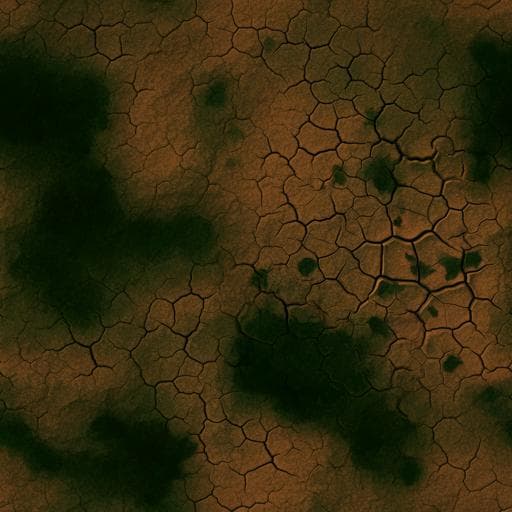
Environmental Studies and Forestry
Livestock enclosures in drylands of Sub-Saharan Africa are overlooked hotspots of N₂O emissions
K. Butterbach-bahl, G. Gettel, et al.
Discover how abandoned livestock enclosures in Sub-Saharan Africa continue to emit significant levels of N₂O, more than 40 years after their abandonment. This research, conducted by Klaus Butterbach-Bahl and colleagues, reveals that these sites are notable N₂O hotspots, contributing about 5% of Africa's anthropogenic emissions.
~3 min • Beginner • English
Introduction
Anthropogenic disturbance of the global nitrogen cycle has increased atmospheric N₂O concentrations from pre-industrial 270 ppbv to 331.1 ppbv in 2018. While synthetic fertilizer use is a primary driver, manure management is also a major source. Africa holds substantial shares of global cattle, sheep, and goat populations, with most animals in semi-arid and arid regions. Pastoral systems commonly confine animals nightly in temporary enclosures (bomas), where manure accumulates because it is rarely collected or used as fertilizer. Upon abandonment, bomas form long-lived nutrient hotspots. The study asks whether abandoned bomas act as spatial hotspots of soil N₂O emissions over decadal timescales in semi-arid and arid SSA and to what extent they contribute to continental N₂O budgets. The purpose is to quantify N₂O fluxes from abandoned bomas across an age gradient, compare them to adjacent savannas, and upscale findings to SSA to assess their significance for anthropogenic N₂O emissions, thereby addressing a potentially overlooked source in emission inventories.
Literature Review
Previous work documents rising atmospheric N₂O largely due to fertilizer use, with manure management also contributing significantly. Livestock numbers in Africa have grown rapidly since 1960. Studies on abandoned bomas show they create long-lived islands of fertility (elevated C, N, P) that alter vegetation and attract wildlife for decades to millennia. N₂O emissions generally increase with soil N availability across systems. However, the role of bomas as N₂O hotspots has been unexplored. Emission inventories (e.g., EDGAR) and IPCC guidelines may underestimate manure-related emissions by not accounting for long-term emissions from abandoned boma sites.
Methodology
Study design and sites: N₂O fluxes were measured at seven semi-arid and arid savanna regions in Kenya during 2018–2019, covering 46 abandoned bomas (0.1–40 years since abandonment) and 22 adjacent undisturbed savanna reference sites. A total of 257 flux measurements were made during wet and dry seasons. At each site, 3–7 plots were randomly selected per boma or control. Time since abandonment was determined via interviews with local herders and community elders.
Flux measurements: Used the fast-box chamber method with an ABB-Los Gatos Research Inc. ultra-portable greenhouse gas analyzer (Model 909-0041). A vented, gas-tight chamber (0.3 × 0.2 × 0.15 m) was pressed onto foam frames, and headspace air was circulated to the analyzer for continuous N₂O readings (5 s running averages) over 4–7 minutes. Fluxes were calculated by linear regression of headspace concentration versus time. Detection limit was <1 µg N₂O-N m⁻² h⁻¹. Routine measurements were conducted in morning hours and on rain-free days. Diurnal variability was assessed at one boma (Kapiti Research Station). Short-term rainfall effects were tested by simulated rain additions to selected bomas and adjacent savannas at Mpala Research Centre.
Environmental and soil measurements: Recorded gravimetric and volumetric soil water content, soil and air temperatures, organic layer thickness, vegetation presence/absence and aboveground biomass (if present) in all plots. Soil total C and N contents were quantified at 0–10 cm at all sites and to 1 m depth at selected sites (Kapiti, Mpala, Ol Kirimatien). Bomas used for >1 year typically had >0.3 m organic layer thickness.
Statistical analyses: Average flux per boma (or control) site was used for analyses. Welch’s t-tests compared boma vs savanna, vegetated vs bare, and deep (>0.3 m) vs shallow (<0.3 m) organic layers. Multiple linear regression on log₁₀-transformed fluxes included gravimetric soil water content (linear and quadratic), soil temperature, organic layer N and C, vegetation cover, time since abandonment, and organic layer depth (multiple r² = 0.41; adjusted r² = 0.26); only soil temperature was significant. Mixed-effects models with site as random effect did not improve fit (higher AIC).
Age–flux model and cumulative emissions: A simple regression related log–log average boma N₂O flux to boma age since abandonment (r² = 0.13). From this, cumulative N₂O emissions per unit area over 40 years (the observed duration of elevated fluxes) were calculated, yielding mean and 95% CI values.
Upscaling to SSA: Gridded livestock numbers (cattle, sheep, goats) from Gilbert et al. were restricted to semi-arid and arid SSA. Livestock units used conversion factors (cattle in herd 0.7; sheep and goats 0.1; Le Houerou & Hoste). Boma area per livestock unit (BAL) from Okello et al.: 4–16 m² per head, central value 10 m². Number of bomas used simultaneously (NB) from interviews: central value 2.5. Years of boma use (YB): variable; central value 3.7 years. Fraction of bomas without manure extraction (FMB): assumed 0.9 from interviews. Annual abandoned boma area was derived from livestock numbers and use parameters; in 2015 this area was ~1792 km² (~0.11% of semi-arid and arid SSA area of 15.16 million km²). N₂O intensity used the measured mean annual boma N₂O-N flux and 40-year duration, converted to N₂O (44/28). Total N₂O from bomas was computed as TLN × BUI × N₂O_int, with uncertainty assessed via Monte Carlo/Latin hypercube sampling across parameter distributions (providing median and quartiles).
Key Findings
- Soil properties: Bomas had up to an order of magnitude higher topsoil (0–20 cm) C and N concentrations/stocks than adjacent savannas, especially when used >1 year.
- Flux magnitude: Bomas (n=46) spanned 9.3–10,266 µg N₂O-N m⁻² h⁻¹ (mean 643 ± 255; n=187), five orders of magnitude variation. Savannas (n=22) were much lower: mean 5.5 ± 1.0 µg N₂O-N m⁻² h⁻¹ (range −0.7 to 15.9; n=70); boma fluxes about one order of magnitude above savanna even after decades.
- Vegetation and manure depth effects: Non-vegetated bomas (n=18) emitted 981 ± 408 µg N₂O-N m⁻² h⁻¹ (n=107), vs vegetated bomas (n=28) 119 ± 48 µg N₂O-N m⁻² h⁻¹ (n=80). Organic layer >0.3 m (n=24) emitted 1125 ± 471 µg N₂O-N m⁻² h⁻¹ vs shallow <0.3 m (n=22) 119 ± 40 µg N₂O-N m⁻² h⁻¹.
- Temporal decline: N₂O fluxes declined exponentially with time since abandonment; soil N content also declined with age. Regression r² = 0.13; p < 0.001.
- Moisture and pulses: No cross-site relationship with soil moisture. Simulated rainfall increased boma N₂O flux by ~3× for ~60 h (20.0 ± 4.2 to 56.1 ± 12.6 µg N₂O-N m⁻² h⁻¹), while savanna fluxes were unchanged (0.6 ± 0.5 to 0.9 ± 0.5).
- Diurnal pattern: Afternoon fluxes about 2× morning; study’s morning, dry-day sampling likely underestimates daily/seasonal totals.
- Cumulative emissions: Over 40 years, mean 25 g N₂O-N m⁻² (95% CI 13.3–48.1); mean annual 0.62 g N₂O-N m⁻² yr⁻¹ (CI 0.33–1.20).
- Continental upscaling: Median boma emissions in semi-arid and arid SSA ~50.2 Gg N₂O yr⁻¹ (25–75%: 29.5–70.6). This is an order of magnitude higher than EDGAR manure management estimates for the same land area (7.7 Gg N₂O yr⁻¹) and equals ~5% of Africa’s current anthropogenic N₂O emissions (EDGAR: 974 Gg N₂O yr⁻¹). Highest country contributions include Ethiopia, Sudan (North and South), Kenya, Tanzania, Burkina Faso, and Nigeria.
- Manure-N fate: Over 40 years post-abandonment, an additional 1.34% (CI 0.90–2.56%) of accumulated manure N is directly emitted as N₂O, not accounted for in current IPCC methods.
- Trend contribution: Bomas account for ~0.006 Tg N yr⁻¹ of the 0.32 Tg N yr⁻¹ increase in Africa’s N₂O between 2000–2005 and 2010–2015 (~2%).
Discussion
The study confirms the hypothesis that abandoned livestock enclosures (bomas) are persistent hotspots of N₂O emissions in semi-arid and arid SSA, remaining elevated for at least four decades compared to adjacent savannas. Elevated soil N and C from concentrated manure inputs drive these emissions, especially in recently abandoned, unvegetated sites and where organic layers are deep. Short-term rainfall pulses and diurnal patterns further enhance emissions beyond morning, dry-day measurements, implying that reported fluxes are conservative. Upscaling demonstrates that abandoned bomas represent a substantial, previously unaccounted source of N₂O at the continental scale, comparable to a notable fraction (~5%) of Africa’s anthropogenic N₂O emissions and far exceeding inventory values attributed to manure management for these regions. These findings highlight a systematic underestimation in current inventories (EDGAR, IPCC methods) that neglect long-term post-abandonment emissions. Management interventions—such as mobile bomas, periodic relocation, and manure spreading upon abandonment—could reduce N₂O emissions while redistributing nutrients to improve rangeland productivity. The results stress the need to include abandoned bomas in national inventories and to investigate indirect emissions pathways to complete the N budget.
Conclusion
Abandoned bomas in semi-arid and arid SSA are long-lived N₂O emission hotspots, with fluxes persisting for at least 40 years and contributing ~50 Gg N₂O yr⁻¹ at the continental scale (~5% of Africa’s anthropogenic N₂O emissions). Current inventory methodologies underestimate manure-related emissions by excluding these sources. The study recommends refining N₂O estimation methods to include abandoned bomas and pursuing further research on indirect emissions (via leaching/runoff and NH₃ volatilization) and on active bomas. Simple, practical manure management—mobile bomas and redistribution of manure upon abandonment—could reduce emissions and enhance rangeland nutrient status and forage productivity.
Limitations
- Measurement bias: Fluxes were measured mainly in morning hours on dry days; diurnal and post-rainfall pulses (observed to elevate fluxes) were not incorporated into cumulative or upscaled estimates, likely biasing results low.
- Model uncertainty: The age–flux regression explained modest variance (r² = 0.13), yielding wide confidence intervals for cumulative emissions.
- Scope: Active bomas and indirect N₂O emissions (from volatilized or leached N) were not quantified and could increase total emissions.
- Parameter assumptions for upscaling: Key parameters (boma area per livestock, number of simultaneous bomas, years of use, fraction without manure extraction) were partly based on interviews/expert judgment; manure extraction rates are poorly documented. Although uncertainty was explored via Monte Carlo/LHS, regional variability may not be fully captured.
- Environmental drivers: Across-site analyses found limited significant predictors beyond soil temperature; lack of strong moisture–flux relationships may reflect sampling times and heterogeneity.
Related Publications
Explore these studies to deepen your understanding of the subject.







